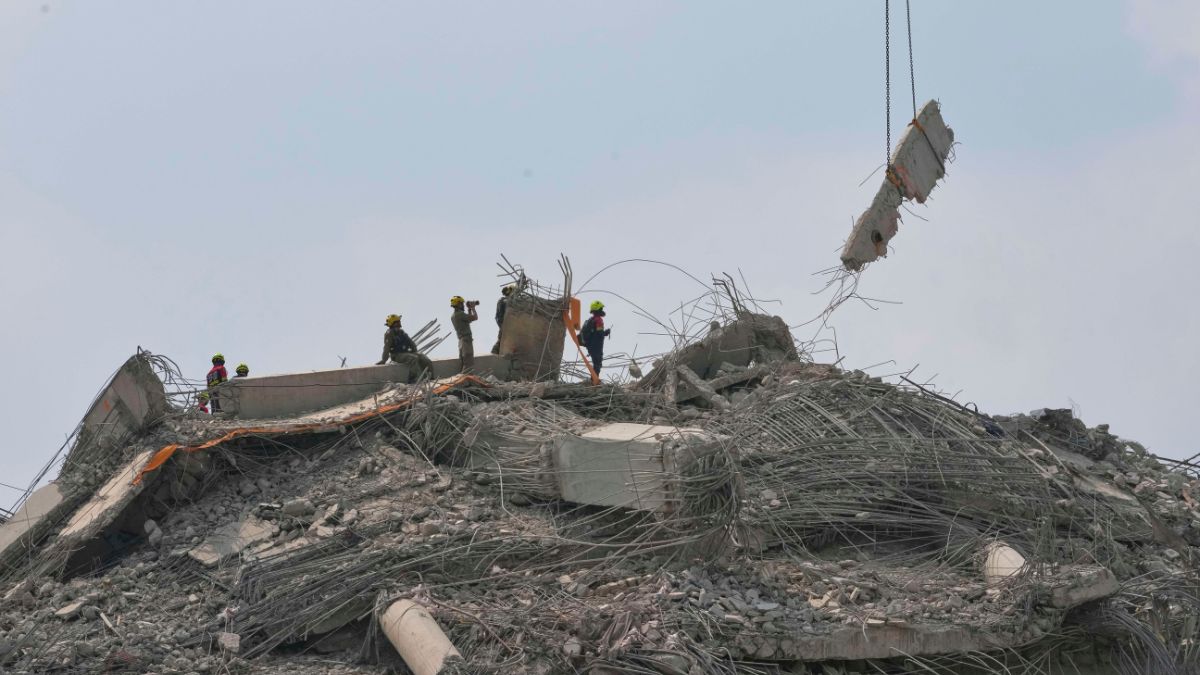The collapse of a 30-storey skyscraper in an earthquake last week in the Thai capital Bangkok has sparked fears of high-rise buildings in the country. The tower under construction toppled as the powerful 7.7 magnitude quake struck central Myanmar and rattled its neighbouring Thailand.
At least 12 people died as the earthquake reduced the skyscraper to rubble in Bangkok. About 75 people are still feared trapped under the debris of the unfinished building.
This has once again raised the question of the safety of high-rise buildings.
Let’s take a look at how secure are such structures.
Fear in Bangkok after skyscraper collapsed
The strong quake on March 28 had forced people to throng the streets of Bangkok as buildings swayed.
Dotted by high-rise structures, only a single office tower block under construction near the popular Chatuchak Market in the Thai capital keeled over.
Visuals of the structure coming down spread on social media, getting etched in people’s memories.
Today, a 7.7-magnitude earthquake in Myanmar caused embarrassment for a Chinese construction company!
— Inconvenient Truths by Jennifer Zeng (@jenniferzeng97) March 28, 2025
The only entire building that collapsed in Bangkok was the nearly completed Thailand Audit Office building, constructed by China Railway No. 10 Engineering Group Urban… https://t.co/6nPAakngWC pic.twitter.com/pNlUVfshdO
The building was being constructed by a Chinese state-owned company and a Thai construction firm.
Its collapse has spread fear among many in Bangkok, especially those who live or work in high-rises.
Speaking to New York Times (NYT), Kanittha Thepasak, whose office is on the 29th floor, said she can hardly imagine returning to work.
“I’m freaked out, I’m worried,” she said. “Thai people have no basic understanding of earthquakes because we never really experience them.”
Somreutal Nilbanjong, 34, told the American newspaper that it “scares” her to just look at high-rise buildings.
Thai authorities have launched an investigation into the collapse of the 30-story tower in Bangkok.
Bangkok Governor Chadchart Sittipunt, who visited the construction site on Monday (March 31), said, “I think we need to find the root cause so at least we can learn some lessons and improve building regulations. In the end, we will have some results that will improve safety in Bangkok.”
The building was being constructed for Thailand’s State Audit Office in a joint venture by a subsidiary of state-run China Railway No. 10 Engineering Group and Italian Thai Development PCL.
Thai Prime Minister Paetongtarn Shinawatra had directed government agencies on Saturday to investigate why the building collapsed within one week.
As per Reuters, the Thai probe is looking into the quality of construction material used, the building’s design, and possible unsafe actions during its construction.
Thai authorities have detained four Chinese nationals for allegedly trying to remove over 30 sensitive documents from the disaster site.
Are high-rise buildings safe?
The collapse of the skyscraper in Bangkok has led many to wonder about the safety of high-rise buildings in the event of an earthquake. Tall buildings are a staple of urban cities in many countries, including India, China, South Korea and Russia.
Those who live in these “villages in the sky” may have fears of being trapped in a fire or earthquake, or falling from the tower.
As T_he Conversation_ noted, high-rise living also evokes threats of communicable diseases such as influenza, as scores of people share a building’s lift buttons and door handles.
In the context of earthquakes, the height of the building does not usually make it more vulnerable. Factors such as the design of the building, the quality of construction materials and maintenance ensure the tower’s safety during a quake.
“The height of a building does not make it susceptible to collapse. There’s no earthquake-proof building, but quake-resistant ones can be constructed,” Moulshri Joshi, an architect, was quoted as saying by Economic Times.
There is also not much to lose your sleep over if your high-rise building is constructed following earthquake safety norms.
If you are on the top floor of a tall tower during a quake, it is recommended to stay put rather than try to reach the ground floor or an open space. Running in panic would only worsen the situation. You should stay in the apartment and move away from glass windows and balconies.
It is better to protect yourself under a piece of sturdy furniture and wait for the jolts to get over.
With inputs from agencies


)
)
)
)
)
)
)
)
)



